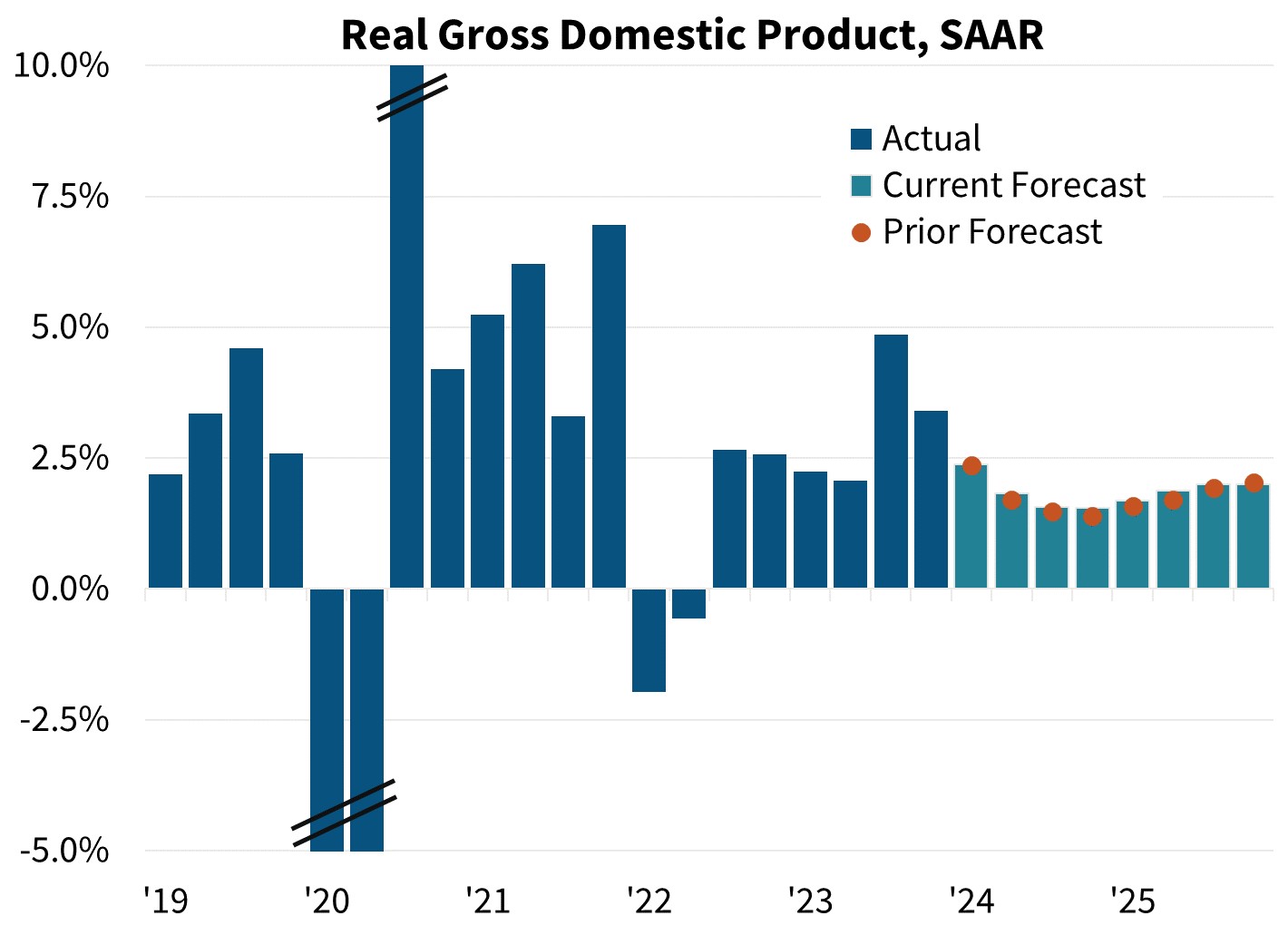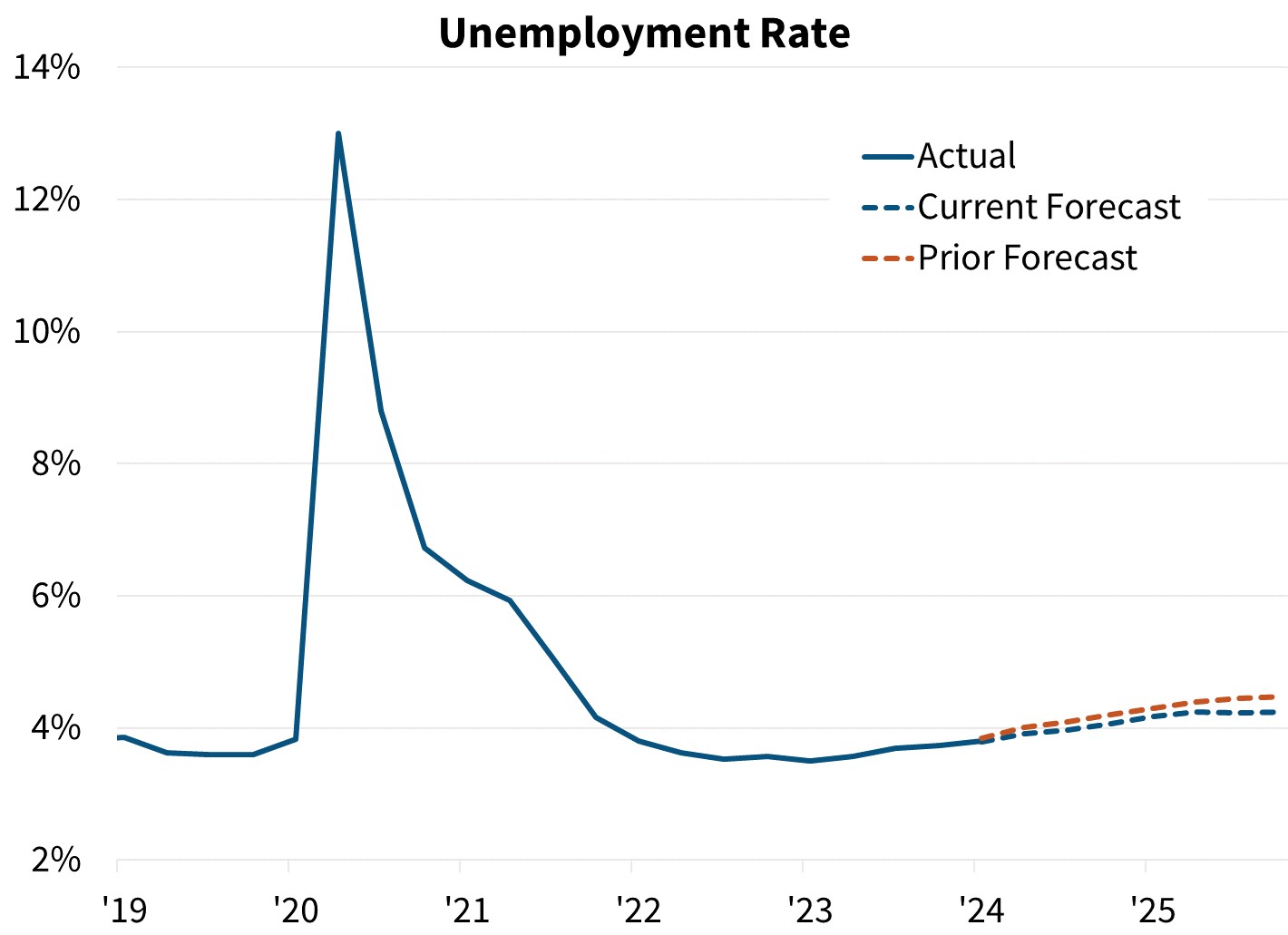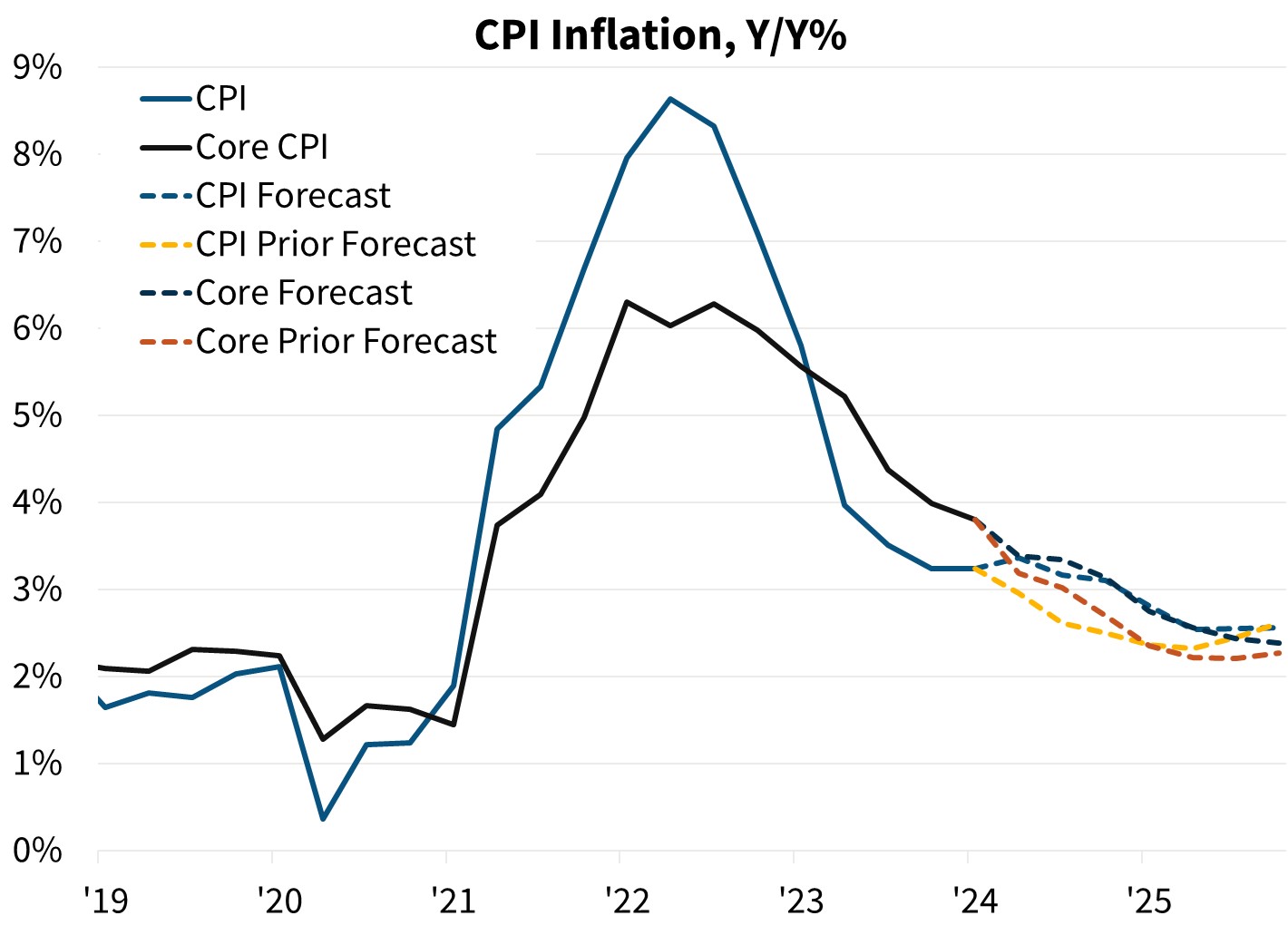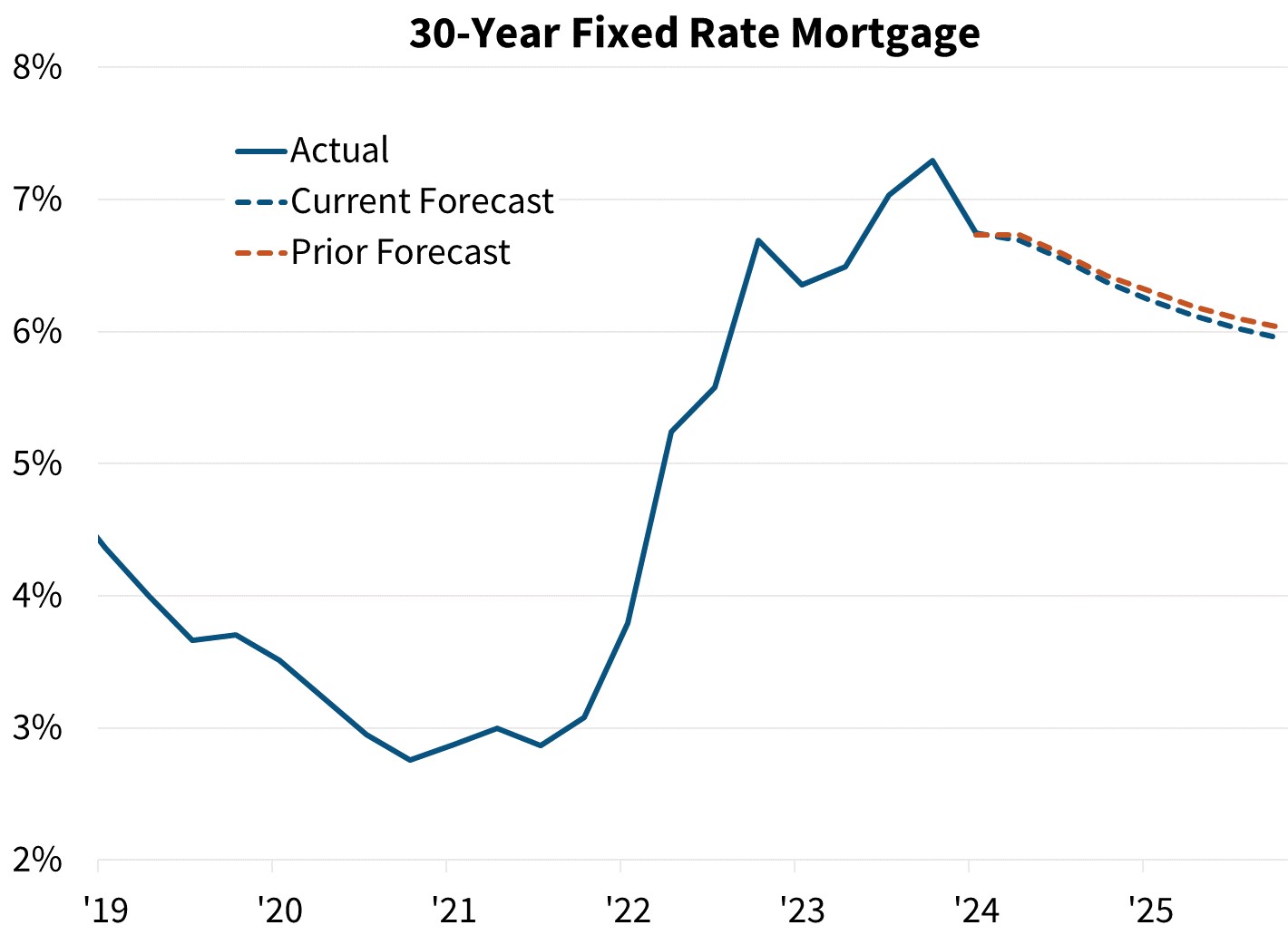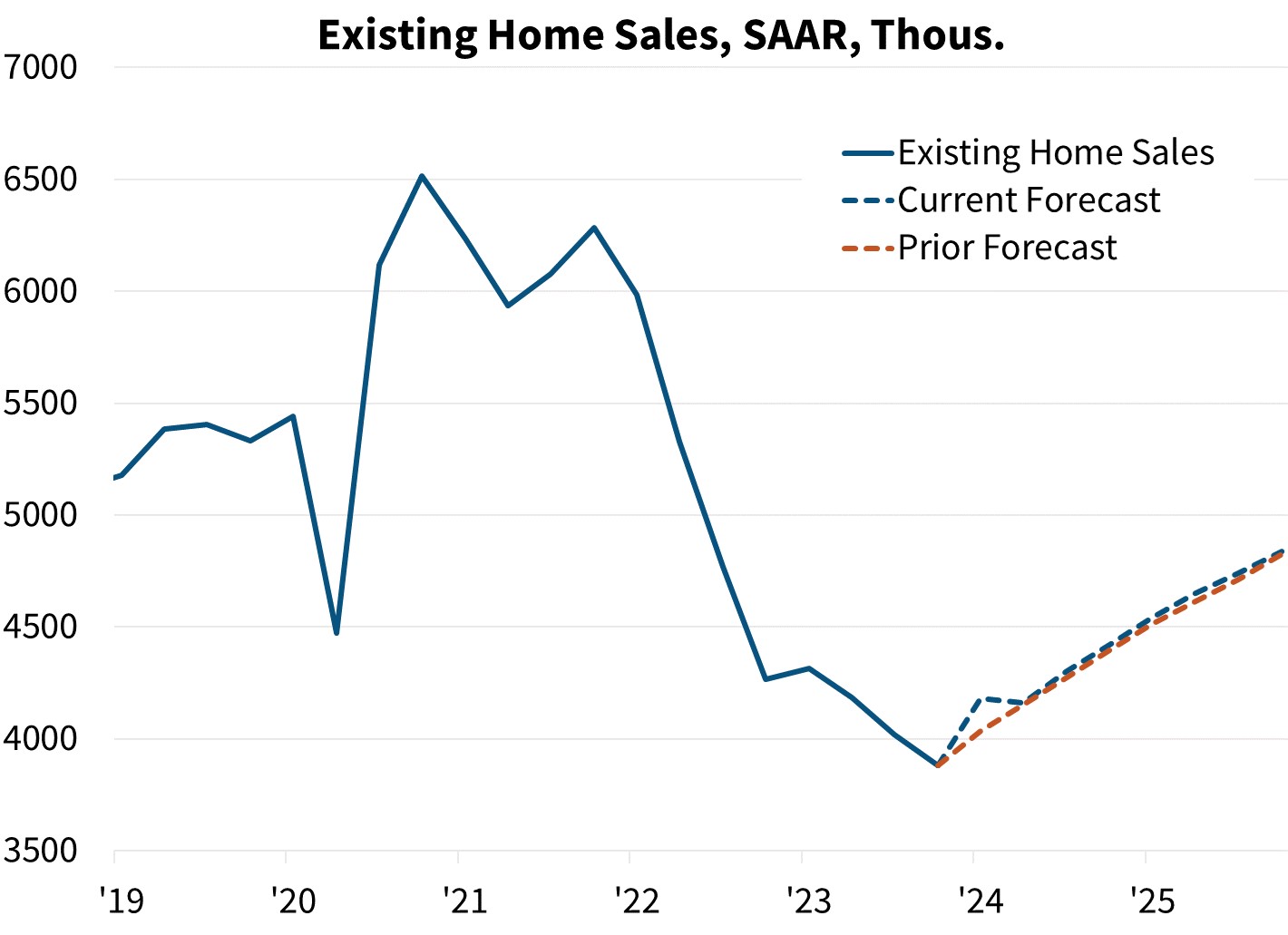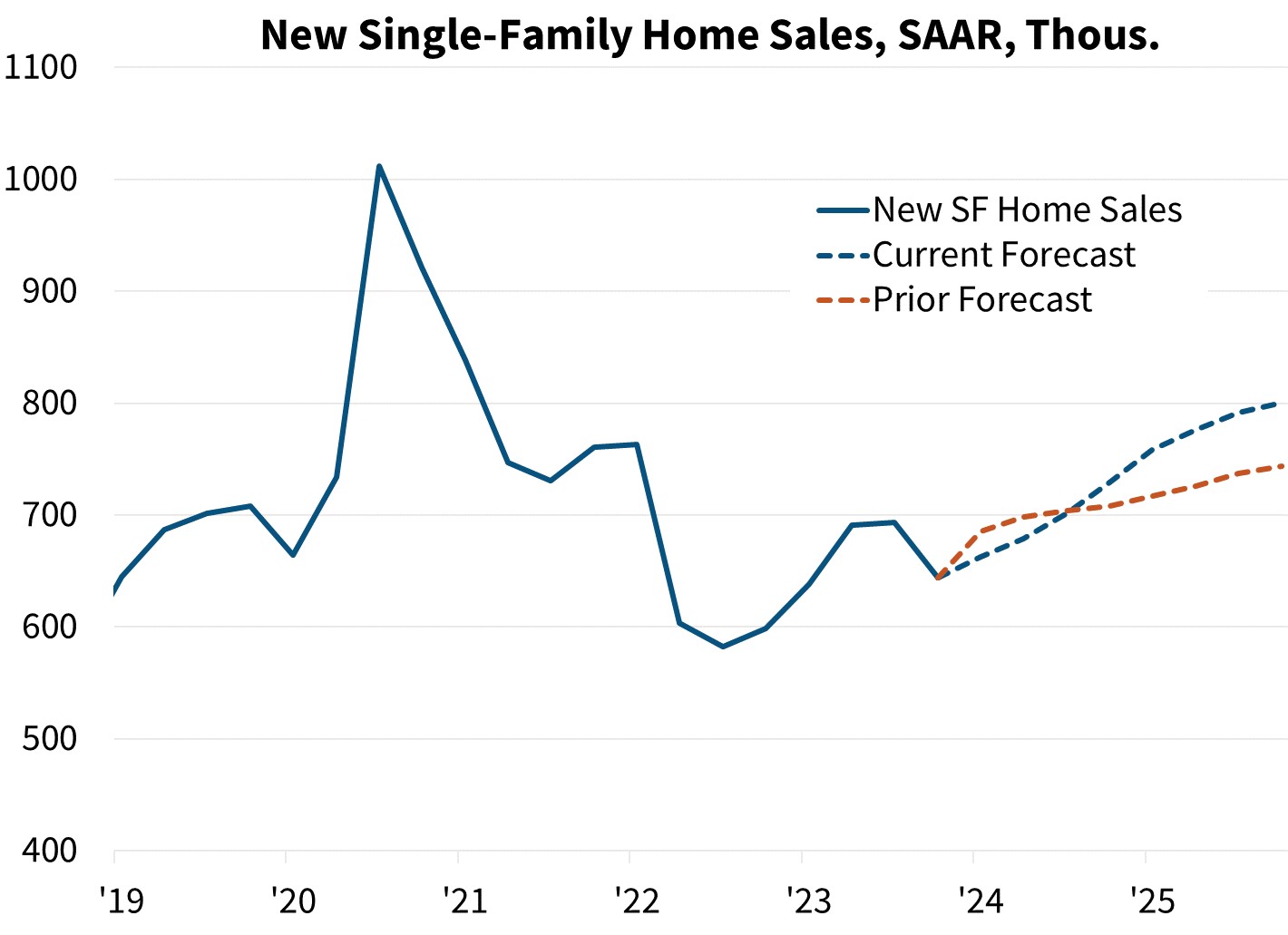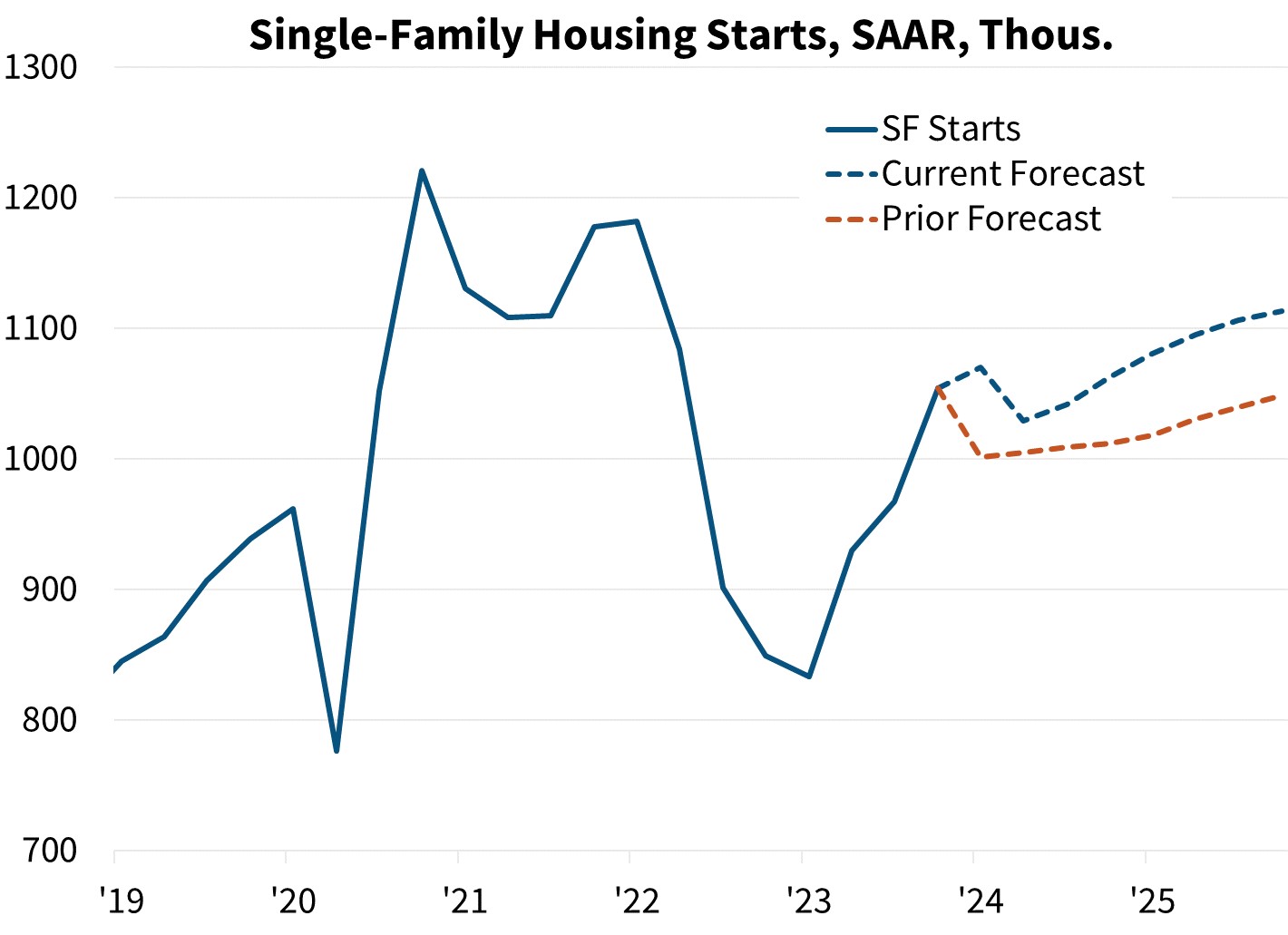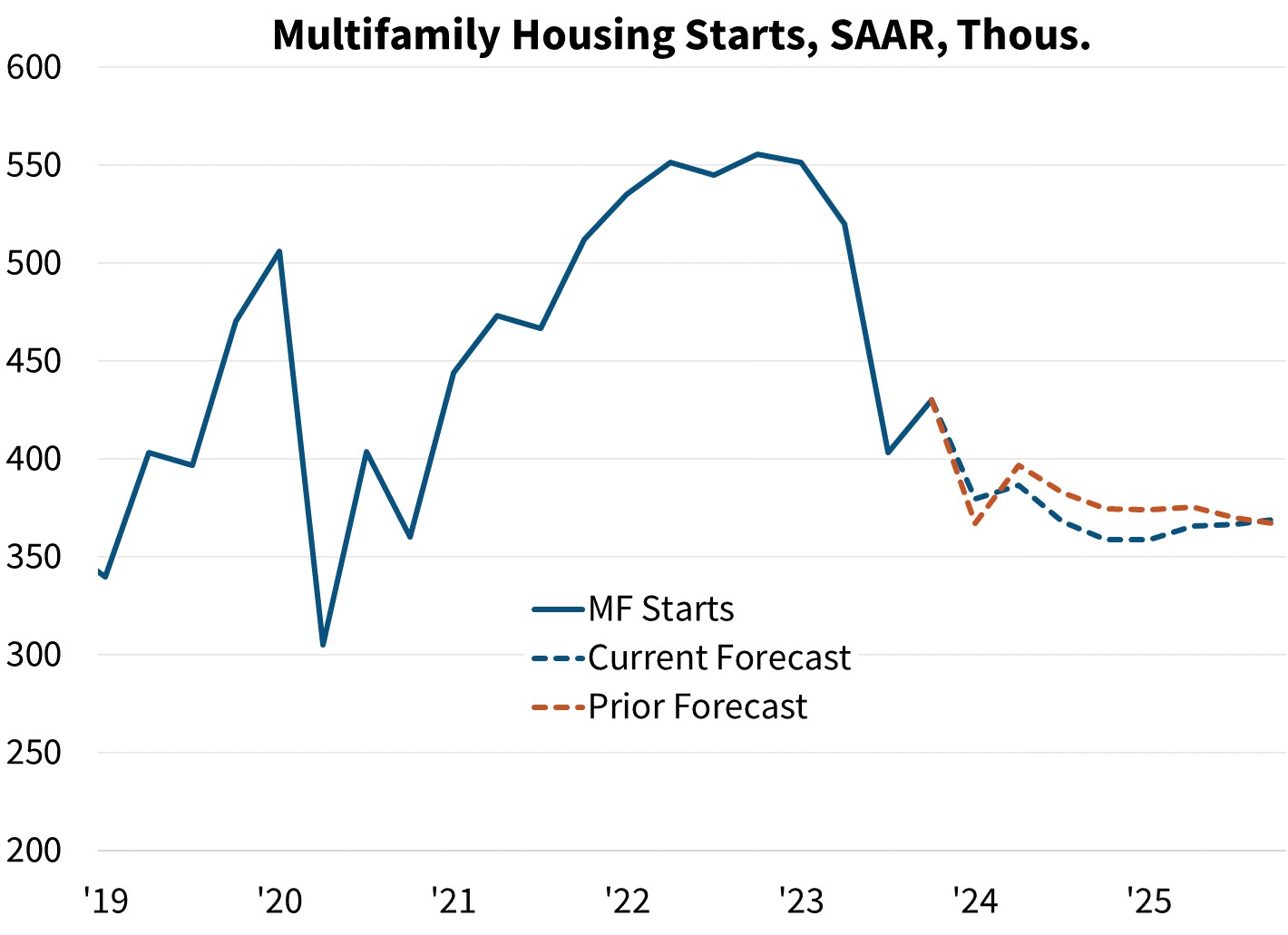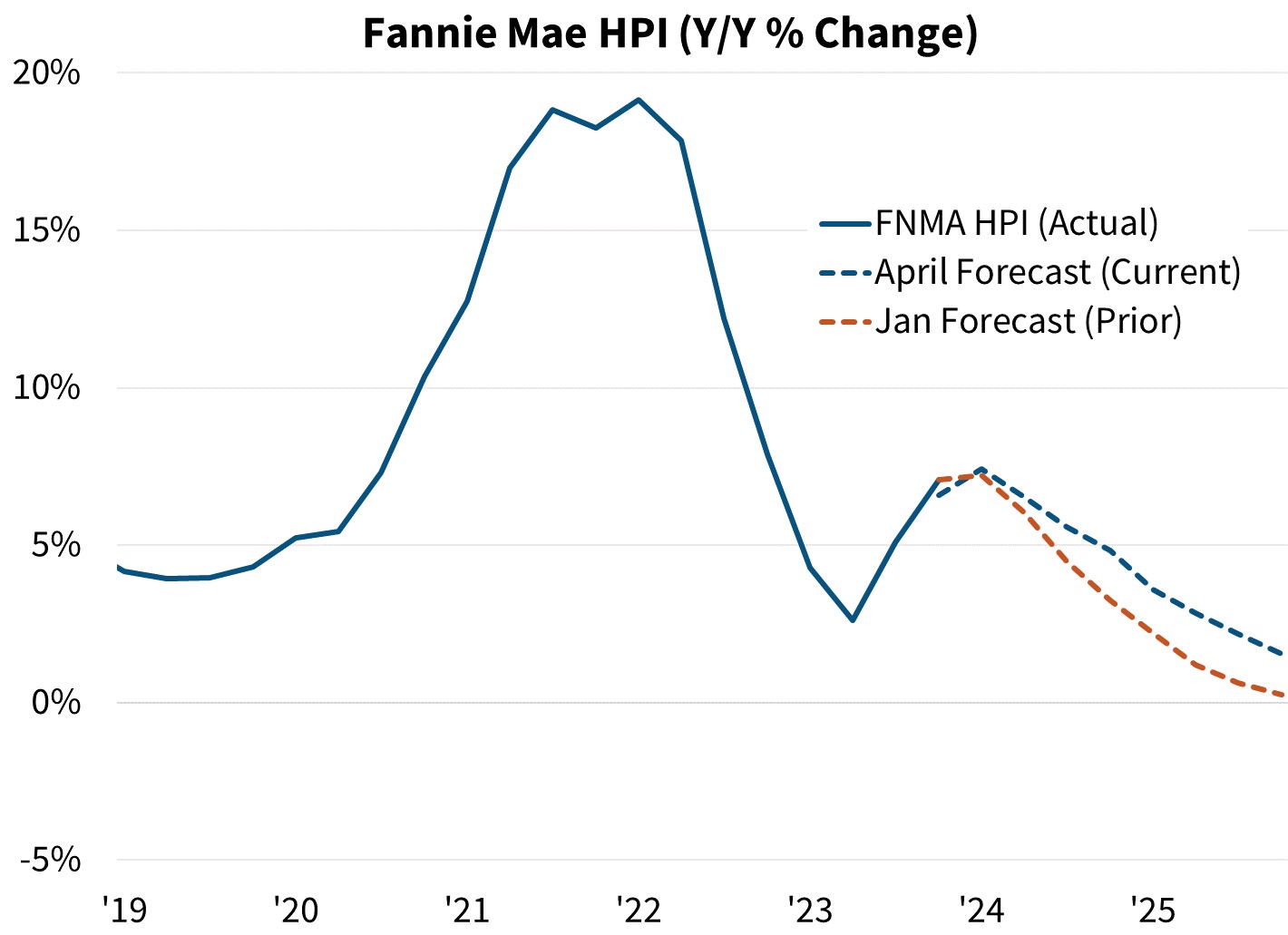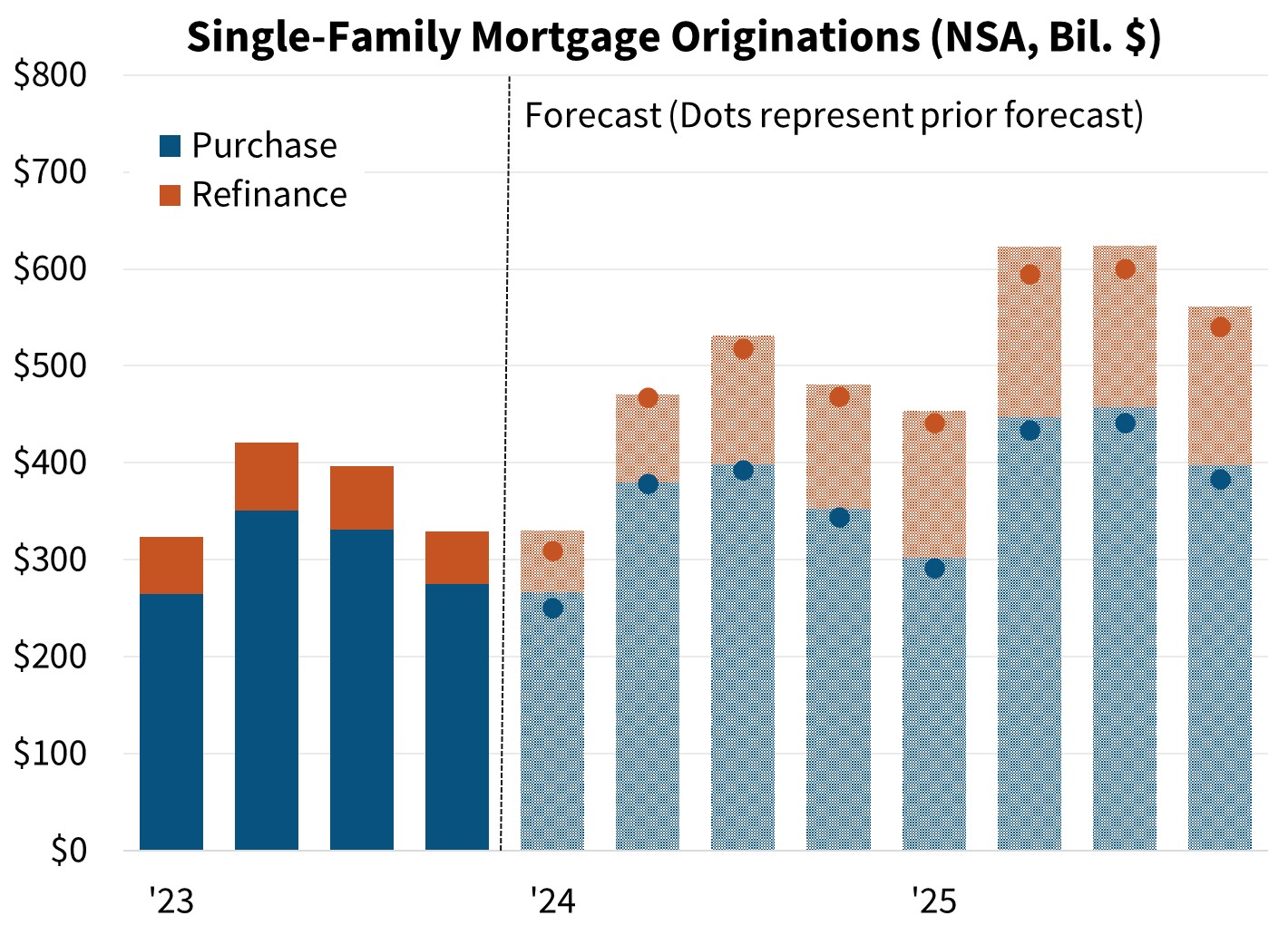Economic Developments - April 2024
For a PDF version of this report, click here.
Stronger-than-expected economic data, including labor and consumer spending reports along with above-target Consumer Price Index (CPI) readings, have led financial markets to increasingly push back expectations for Federal Reserve rate cuts this year. As a result, long-run interest rates, including mortgage rates, have trended up in recent months. This includes a sharp rise since the start of April, presenting further headwinds to the recovery in home sales and homebuyer affordability.
We continue to forecast moderating economic growth and inflation, though the interest rate environment looks increasingly to be one of "higher for longer." Thus, we have revised our fed funds rate outlook to just two cuts this year rather than three, starting in September (previously June). We now forecast real Gross Domestic Product (GDP) to rise 1.8 percent on a Q4/Q4 basis in 2024, a slight upgrade from last month's projected 1.7, but still a deceleration from 2023 growth of 3.1 percent. Our forecast expects core CPI to be 3.1 percent by end of year on a Q4/Q4 basis (up from 2.7 percent), but, here again, a deceleration from 4.0 percent in 2023.
Home sales are expected to remain subdued but drift higher over 2024. Despite continued high mortgage rates, an increasing share of homeowners appear to be acclimating to the higher mortgage rate environment or deciding they can no longer put off the listing of their homes. However, with the 10-year Treasury rising about 40 basis points since the conclusion of our interest rate forecast at the start of April, there is downside risk to our current sales outlook. We have also upgraded our quarterly home price forecast based on recent data. We still expect home price growth deceleration going forward. As measured by the Fannie Mae Home Price Index (FNM-HPI) we project home price growth of 4.8 percent and 1.5 percent in 2024 and 2025, respectively, on a Q4/Q4 basis. Lastly, total mortgage originations are forecast to be $1.81 trillion in 2024 (previously $1.76 trillion) and $2.26 trillion in 2025 (previously $2.18 trillion).
Interest Rate Cuts Appear to Be on Hold, for Now
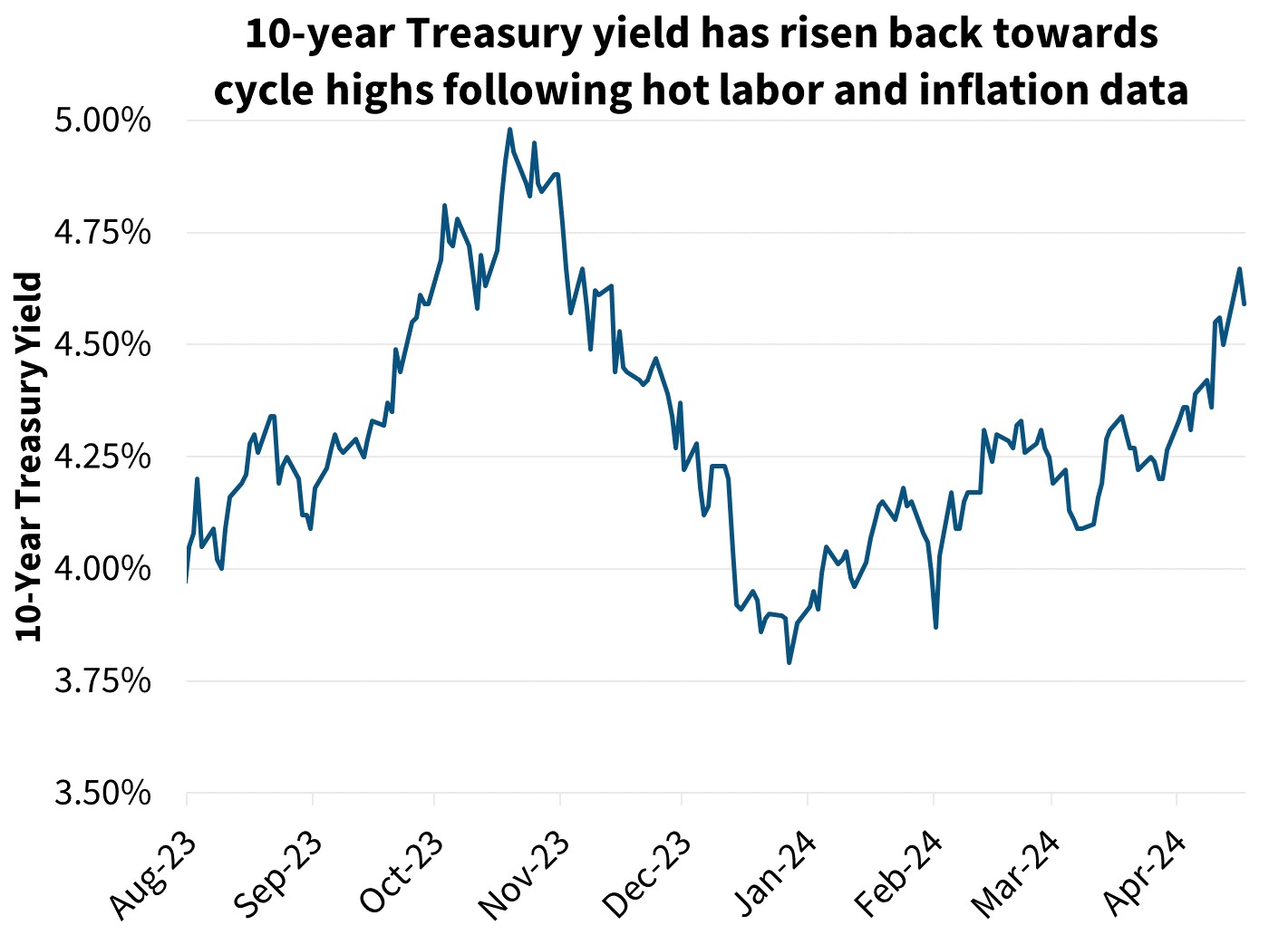
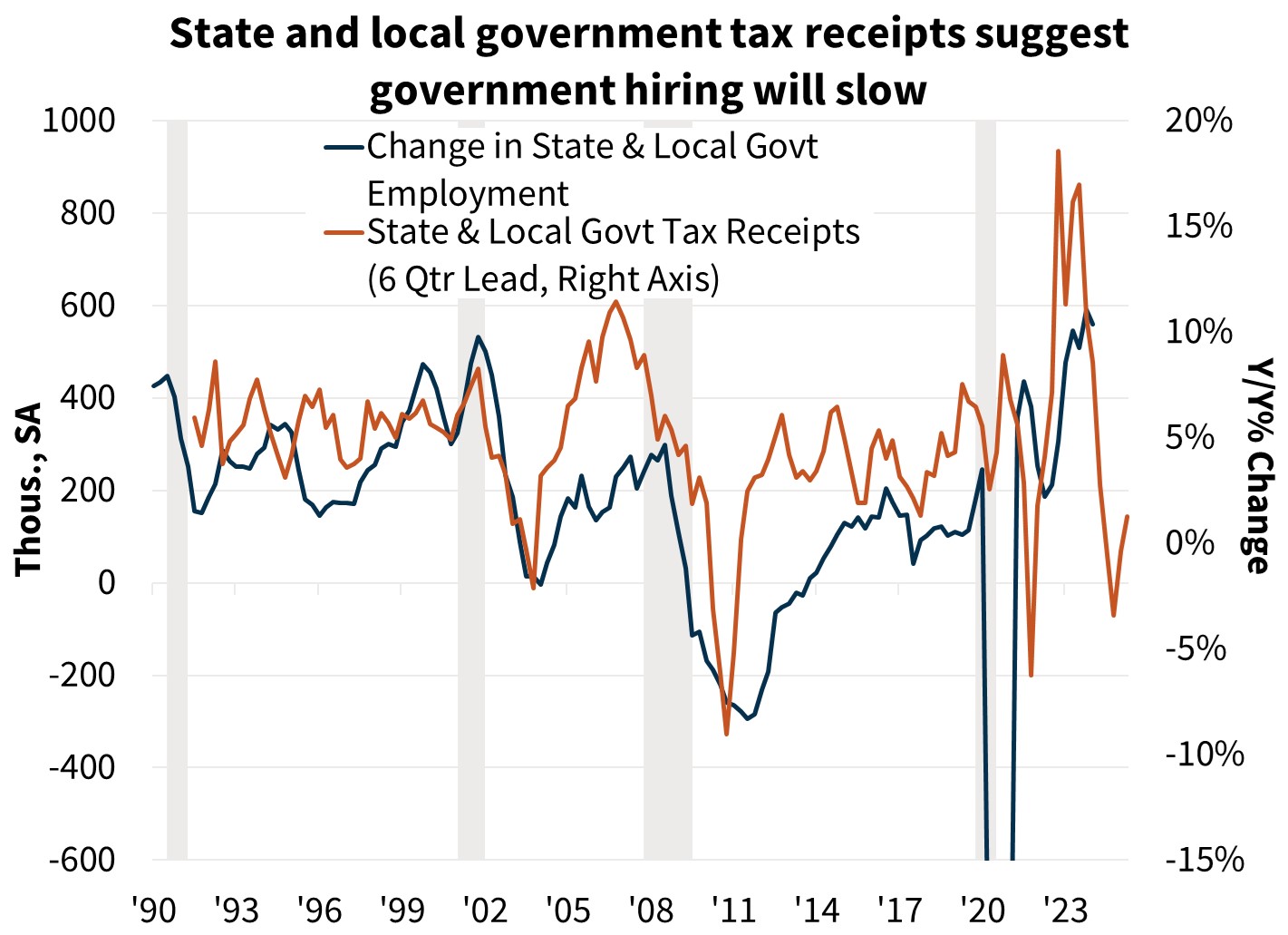
While payroll employment continues to surprise to the upside, rising by a strong 303,000 in March, we continue to see the current dynamic as only a matter of time before significant deceleration occurs. Business surveys, such as the National Federation of Independent Businesses (NFIB) and the Institute for Supply Management (ISM) Indices, have deviated more than what is typical in recent years from much of the hard data, but recent movements have shown a decline in hiring conditions and plans, suggesting employment growth is poised to slow. Additionally, recent payroll employment strength has disproportionately relied on public sector payrolls, with about 20 percent of all job gains since 2023 coming from the state and local government sector, compared to just 6 percent between 2017 and 2019. Given the slowdown in local and state tax receipt growth last year, we anticipate the pace of the recent government payrolls growth will likely slow by the second half of 2024, contributing to a broader slowdown in hiring.
More broadly for economic growth, recent strength in consumer spending has come at the expense of the personal saving rate dropping to new recent lows, as consumption growth has outpaced the rate of household income gains in recent months. The saving rate declined five-tenths to just 3.6 percent in February, compared to a pre-Covid average of around 7 percent. While strong gains in both the stock market and home prices in recent years would be expected to put downward pressure on the saving rate as households tap these sources of wealth, we see the current level of savings as being unsustainably low. Household debt levels do not appear overly stretched relative to assets or incomes in the aggregate; however, the continued tightening in lending standards and higher interest rates will likely limit growth in debt-financed consumption growth. Some signs of stress are also evidenced by the latest auto and credit card delinquency data. We, therefore, continue to expect softening consumer spending growth, and more largely GDP growth, later this year.
One thing we, and the market, expect at the March Federal Open Market Committee (FOMC) meeting is some discussion of the policy regarding their balance sheet. The Chair noted at the last press conference that it would be a topic of discussion at the March meeting.
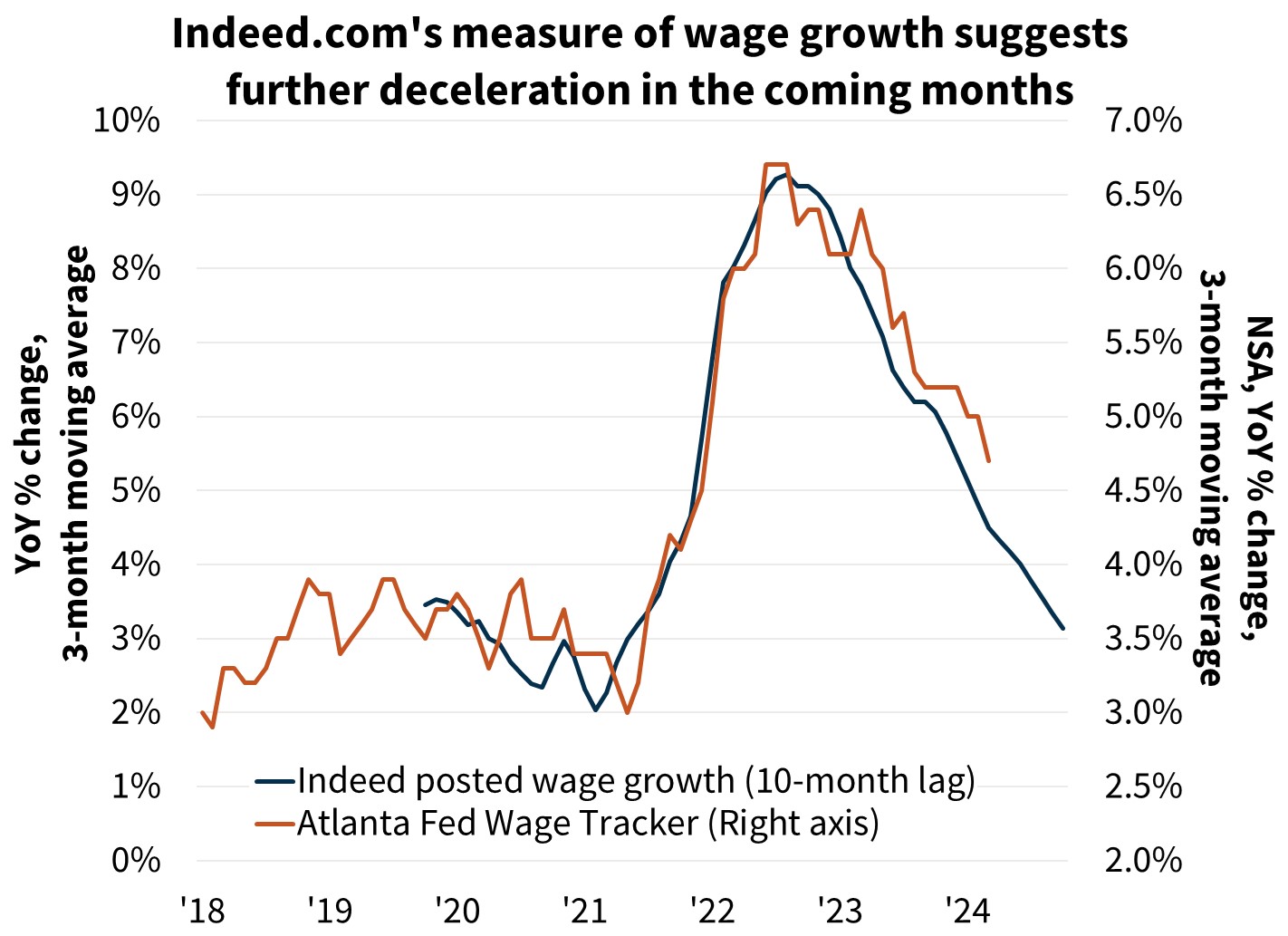
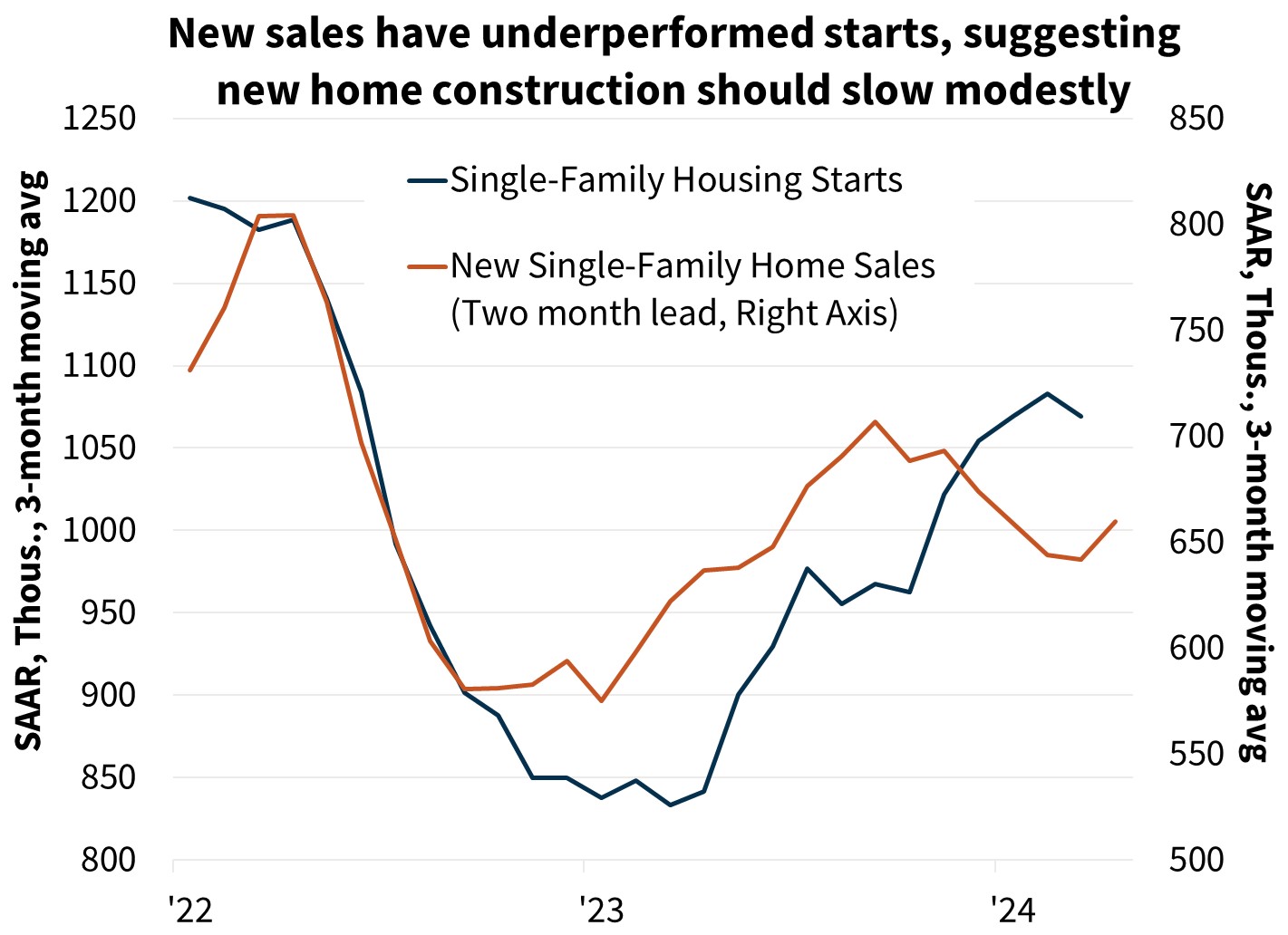
As measured by the Fannie Mae HPI, home prices rose 1.7 percent over the first quarter on a seasonally adjusted basis and were up 7.4 percent from a year prior. This was a modest acceleration from 6.6 percent annual growth in Q4 2023. We now project home prices to rise 4.8 percent on a Q4/Q4 basis in 2024 (we previously projected 3.2) and 1.5 percent in 2025 (previously 0.3 percent). However, even with this upgrade, we still anticipate decelerating price growth as the lack of affordability weighs on home purchase demand and the inventory of homes available for sale gradually increases.
While we believe home sales are likely to stay subdued in the near term, listings of homes for sale have been trending upward in recent months and have outpaced sales. The growth in listings is consistent with recent trends in the Fannie Mae Home Purchase Sentiment Index® showing improved sentiment around home-selling conditions. However, given the ongoing affordability challenges and elevated mortgage rates, this growth in listings is not translating into a one-for-one increase in sales. We expect listings will continue to outpace sales as the year progresses, leading to a gradual loosening of inventory and decelerating home price growth.
New single-family construction continues to be strong, though the relatively slower pace of new home sales points to some softening in the near term. Single-family housing starts fell sharply by 12.4 percent in March, and we are expecting some comparative softness next quarter as the starts to new home sales ratio comes into a more typical alignment. However, over the longer term, the continued tight existing sales market is expected to be supportive of new home sales over the coming years.
Economic Forecast Changes
Economic Growth
The third estimate for Q4 2023 GDP growth from the Bureau of Economic Analysis (BEA) showed that GDP grew an annualized 3.4 percent, two-tenths higher than the second estimate. Compared to our previous forecast, GDP growth has been revised up slightly through 2025. We revised upward both our Q4/Q4 2024 and 2025 GDP outlooks by one-tenth to 1.8 percent and 1.9 percent, respectively.
Labor Market
Nonfarm payroll employment growth was 303,000 in March. The unemployment rate ticked down one-tenth to 3.8 percent. Compared to last month, we have lowered our unemployment rate expectations consistent with a modest GDP growth upgrade, though we continue to expect a gradual uptick over time. We project the unemployment rate to gradually trend toward (but still not reaching through 2025) the Non-Accelerating Inflation Rate of Unemployment (or NAIRU), estimated by the Congressional Budget Office to currently be 4.4 percent.
Inflation & Monetary Policy
The March CPI report came in hotter than our expectations. Headline CPI grew 0.4 percent over the month for the second month in a row and grew 3.5 percent compared to a year ago, an acceleration of three-tenths from February. Core inflation remained persistent, rising 0.4 percent over the month for the third consecutive month, with the annual rate unchanged at 3.8 percent as shelter inflation remains hot. A higher energy price outlook and persistent stickiness in the core measure of inflation led to an upward revision to our inflation forecasts this month, though we still forecast inflation to moderate over the forecast time horizon.
Our baseline expectation is that the Fed will begin rate cuts in September compared to our previous forecast of June. We now only expect two rate cuts this year, instead of three, given the persistence of inflation and the robust labor market.
Housing & Mortgage Forecast Changes
Mortgage Rates
We revised our mortgage rate forecast downward slightly month over month. We now forecast the 30-year fixed rate mortgage rate to average 6.6 percent in 2024, and to average 6.1 percent in 2025. However, interest rates remain volatile, particularly given changes in Fed policy expectations, which adds risk to our outlook. Following the completion of our start-of-the-month interest rate forecast, long-run rates have jumped in response to hot CPI and labor reports, leading to upside risk to our current baseline mortgage rate forecast.
Existing Home Sales
Existing home sales jumped to a seasonally adjusted annualized rate (SAAR) of 4.38 million in February. We revised modestly upward our forecast through 2025, with a jump in Q1 reflecting strength seen in January and February. While we expect a pullback in Q2, we continue to forecast existing sales to trend upward over our forecast horizon.
New Home Sales
New single-family home sales were essentially unchanged at a SAAR of 662,000 in February. We have lowered our expectations for new home sales through Q3, though from Q4 onward we’ve upgraded our forecast following a reassessment of construction trends and the current sales and construction starts relationship. New home sales continue to benefit from the limited inventory of existing homes for sale, which we expect to support demand for new homes over our forecast horizon.
Single-Family Housing Starts
Single-family housing starts fell 12.4 percent to a SAAR of 1.02 million in March, while permits dropped 5.7 percent to 973,000. The weakness is not entirely unexpected given the relative outperformance of starts to sales early this year, and so some comparative softness in the near term is expected. However, we continue to expect that the lack of existing homes available for sale will continue to boost new home construction in the medium term, and we have adjusted upward our expected starts pace over the forecast horizon.
Multifamily Housing Starts
Multifamily housing starts plummeted to a SAAR of 299,000 in March, while permits edged down to a SAAR of 485,000. We have downgraded our forecast through Q3 2025, as we believe multifamily starts remain likely to decline due to muted national rent growth and more multifamily units near completion. However, this series is notoriously volatile, and we anticipate some bounce back from the March reading.
Single-Family Home Prices
According to the most recently published non-seasonally adjusted Fannie Mae Home Price Index (FNM-HPI), home prices are forecast to rise 4.8 percent in 2024 on a Q4/Q4 basis and 1.5 percent in 2025, upgrades of 1.6 percentage points and 1.3 percentage points, respectively from our prior forecast. Furthermore, after revisions, the FNM-HPI now shows that home prices grew 6.6 percent Q4/Q4 in 2023, a downward revision of five-tenths. Our next home price update will be in July.
Single-Family Mortgage Originations
We have revised upward our expectation for both purchase and refinance mortgage origination volumes this month, due in particular to our more optimistic home price growth expectation and somewhat lower mortgage rate path, along with an upgraded expectation for home sales. We now expect 2024 purchase volumes to total just under $1.4 trillion, representing a $31 billion upward revision from last month’s forecast and 14 percent growth from 2023. We expect purchase volumes to grow a further 15 percent in 2025 to 1.6 trillion, a further upgrade of $52 billion from our prior forecast.
In the refinance market, we now expect origination volume to come in at $415 billion for 2024 and $657 billion in 2025, both upward revisions from our prior forecast. As with the purchase market, volumes were revised upward primarily due to our stronger home price forecast.
It should be noted however, that given the upside risk to mortgage rates in our forecast, we see downside risk to our originations outlook.
Economic & Strategic Research (ESR) Group
April 16, 2024
For a snapshot of macroeconomic and housing data between the monthly forecasts, please read ESR's Economic and Housing Weekly Notes.
Data sources for charts: Bureau of Economic Analysis, Bureau of Labor Statistics, Census Bureau, Indeed.com, National Association of REALTORS, Federal Reserve, Atlanta Federal Reserve, Freddie Mac, Fannie Mae
Opinions, analyses, estimates, forecasts and other views of Fannie Mae's Economic & Strategic Research (ESR) Group included in these materials should not be construed as indicating Fannie Mae's business prospects or expected results, are based on a number of assumptions, and are subject to change without notice. How this information affects Fannie Mae will depend on many factors. Although the ESR group bases its opinions, analyses, estimates, forecasts and other views on information it considers reliable, it does not guarantee that the information provided in these materials is accurate, current or suitable for any particular purpose. Changes in the assumptions or the information underlying these views could produce materially different results. The analyses, opinions, estimates, forecasts and other views published by the ESR group represent the views of that group as of the date indicated and do not necessarily represent the views of Fannie Mae or its management.
ESR Macroeconomic Forecast Team
- Doug Duncan, SVP and Chief Economist
- Mark Palim, VP and Deputy Chief Economist
- Eric Brescia, Economics Manager
- Nick Embrey, Economics Manager
- Nathaniel Drake, Economic Analyst
- Richard Goyette, Economic Analyst
- Daniel Schoshinski, Economic Analyst
- Ryan Gavin, Economic Analyst
